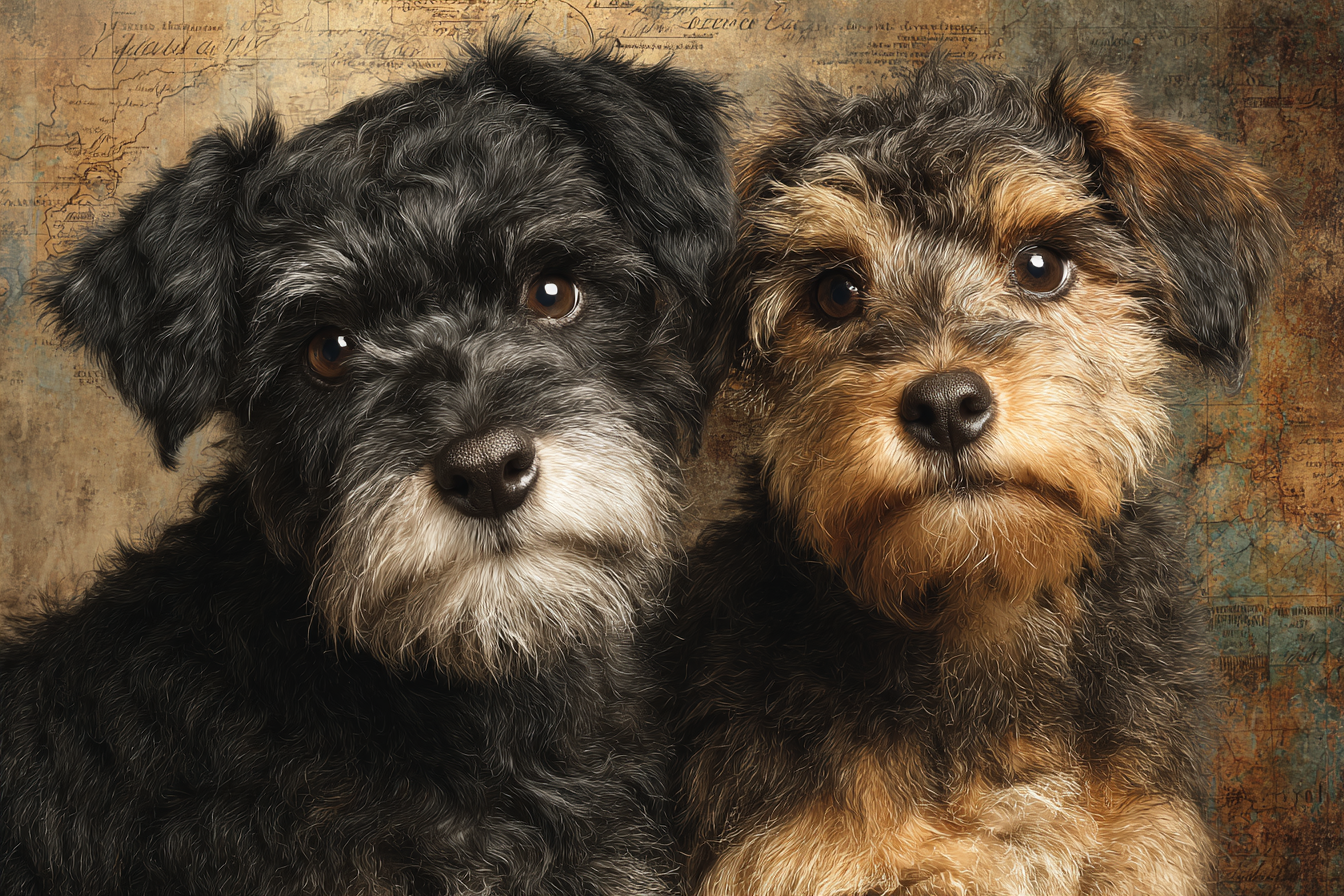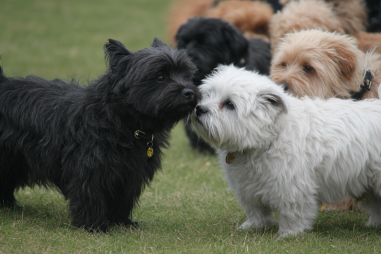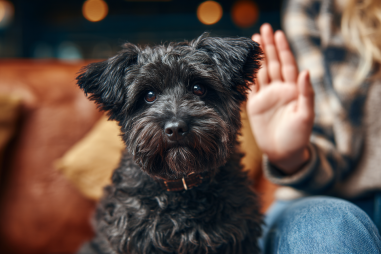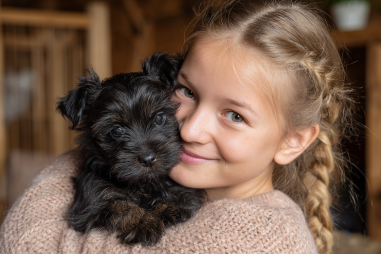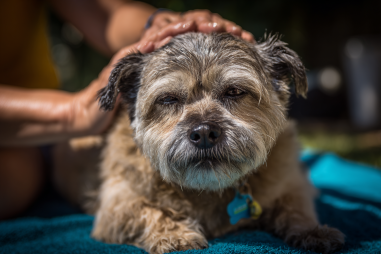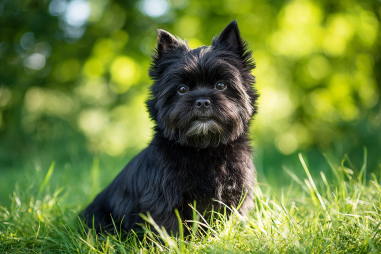The Affenpinscher is a small dog with a big personality, known for its distinctive appearance and lively spirit. Though many people adore this breed today as a playful and loving companion, its history is rich and fascinating, woven into the fabric of European life centuries ago. From humble beginnings as a skilled ratter in households to becoming a cherished show dog and family pet, the story of the Affenpinscher reveals much about its unique character and enduring appeal. Let’s journey back in time to explore the intriguing origins and development of this captivating breed.
Early Origins and Name Meaning
The Affenpinscher’s origins trace back several centuries to Germany and parts of France, where the breed was developed primarily as a rat-catcher. The name “Affenpinscher” provides a clue to its appearance and heritage. Derived from the German word “Affe,” meaning “monkey,” the name literally translates to “Monkey Terrier.” This nickname was inspired by the breed’s distinct facial features, including a mischievous expression framed by a rough coat and bushy eyebrows that give it a notably simian look.
While exact dates of the breed’s creation are difficult to pinpoint, records and artwork suggest that Affenpinschers existed as early as the 1600s. These dogs were treasured not only for their companionship but also for their utility in stables and homes where rodent control was essential. Their small size allowed them to navigate tight spaces, making them excellent hunters of rats and mice, which helped protect food stores and supplies from infestation.
Historical Uses and Roles
More than just charming pets, Affenpinschers had practical purposes that made them valuable to European families, especially in rural and urban settings. Their primary role was as vigilant ratters, working in homes, barns, and shops where rats threatened valuable goods. This natural instinct for hunting rodents was combined with keen alertness and fearless attitude despite their petite stature.
In addition to their role as vermin hunters, Affenpinschers often served as watchdogs. Their alert nature and loud bark meant they could quickly raise an alarm if strangers or suspicious activity approached. This blending of skills made them indispensable companions to workers and merchants throughout Europe.
Over time, the breed’s affectionate temperament and humorous personality endeared them more to families as indoor companions. Their presence offered both utility and entertainment, solidifying their place in the household beyond mere function.
Evolution of Physical Traits
The physical appearance of the Affenpinscher has evolved in parallel with its role and popularity. Originally bred for practicality, early Affenpinschers had a more rugged, wiry coat that provided protection while hunting in various environments. Their size was kept small intentionally to maintain agility, so they could squeeze into nooks to chase rodents effectively.
Characteristic features that define the breed today were carefully preserved and enhanced by selective breeding. These include a compact, square-shaped body, a dense, rough coat, and those famous facial traits — wide-set dark eyes and a slightly upturned nose surrounded by a bushy beard and mustache. Their ears may be cropped or left natural, and their tail was traditionally docked, though this practice varies today depending on regulations in different countries.
The Affenpinscher’s coat comes in a variety of dark shades, including black, grey, silver, and occasionally reddish tones. The texture and grooming of the coat are important in preserving the breed’s distinct look, requiring regular maintenance to keep it in good condition.
Recognition by Kennel Clubs
As the Affenpinscher grew in popularity beyond its roles in Germany and France, kennel clubs around the world began to take notice. The breed officially entered competitive circles in the late 19th and early 20th centuries. The German Kennel Club was among the first to recognize the breed formally, helping establish standards for appearance and temperament.
The American Kennel Club (AKC) recognized the Affenpinscher in 1936, which greatly contributed to its rise in status in the United States dog show and pet communities. Throughout the 20th century, the breed steadily gained fans worldwide as both a show dog and household companion. Breed clubs dedicated to preserving the Affenpinscher’s unique qualities and heritage have been instrumental in educating breeders and owners alike about maintaining breed standards.
Affenpinscher in Popular Culture
The Affenpinscher’s unique look and lively nature have occasionally landed it roles in mainstream media and popular culture. Its resemblance to a mischievous monkey combined with a spirited personality makes it a favorite for advertising, films, and even internet fame where quirky and expressive dogs often become stars.
Although not as extensively featured as some other breeds, Affenpinschers have a loyal fan base who highlight their playful charm and endearing expressions through social media, helping introduce new audiences to the breed. Their comic antics and distinctive appearance make them memorable companions that often leave a lasting impression on anyone lucky enough to meet one.
Preservation and Breeding Efforts
Maintaining the Affenpinscher breed’s health, temperament, and signature appearance requires ongoing effort from breeders and enthusiasts. Responsible breeding practices focus on minimizing health problems common to small terrier-type dogs, such as patellar luxation and certain respiratory or dental issues. Genetic screening, ethical breeding, and careful socialization all contribute to preserving the breed’s well-being.
International breed clubs play a pivotal role in providing guidance and resources to breeders. They organize events, shows, and educational programs to keep public interest alive while promoting standards that ensure the Affenpinscher’s unique qualities remain intact for future generations.
Because the breed is relatively rare compared to more common small dogs, conscientious breeders also emphasize finding suitable homes that appreciate the Affenpinscher’s spirited nature and grooming needs. A well-matched and stable environment helps the breed flourish as a joyful companion.
Embracing the Affenpinscher’s Unique Legacy
The Affenpinscher’s journey from a hardworking ratter in European households to a beloved companion dog highlights an extraordinary legacy shaped by utility, temperament, and charm. Its monkey-like expression and spunky demeanor continue to captivate dog lovers who appreciate a small breed with a big personality. As we celebrate the Affenpinscher’s rich history, we also honor the dedicated breeders and owners who keep this special breed thriving in modern times. Whether chasing after pests long ago or winning hearts today, the Affenpinscher remains a fascinating and cherished presence in the canine world.

